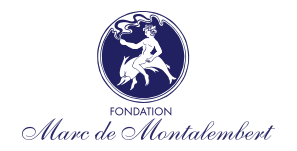| 2022 | Mamluk chivalry through military painted manuscripts | Nationalité : Egypte Domaine : Archéologie islamique |
|---|---|---|
|
Présentation de la recherche et résultats This research deals with a study of several military Mamluk manuscripts decorated with paintings. The Mamluk period witnessed remarkable achievements in all the majors of arts and manuscripts. This study brought new results that reveal for the first time much about Chivalry books and their content; and it traces various copies in international libraries and museums. The results are articulated in two parts. The first part deals with “kitāb al-maḫzūn ğāmiʿ al-funūn” attributed to Ibn Aḫī Ḥuzām and preserved in the Bibliothèque Nationale de France (BnF) in Paris, under number Arabe 2824. It includes many different chivalry sections and details of war plans, such as the shapes of fields, the arrangement of armies in battle, and shapes of some military weapons and how to use them. The manuscript includes a specific part for the fireworks, its techniques and usage and methods of manufacturing and working with them. The study deals with this manuscript from the descriptive perspective, with an analysis of its elements and content and shedding light. It addresses the problem of the author and date of the manuscript, as well as the various sections of the manuscript, indicating each element in detail. The second part focuses on a military manuscript from the Mamluk era, the various copies of which were transferred between Egypt and international libraries and museums. The study follows the story of the extraction of its papers and the transfer of its copies between these places, the steps of its compilation, and attempts to date it. The Museum of Islamic Art in Cairo keeps three leaves removed from one of the unknown Mamluk Chivalry manuscripts, until most of the pages of this copy were accessed as they are kept by the Keir Collection at the Dallas Museum in USA, where the number of its leaves reaches 76 that include several artistic shapes and depictions. Most of the study is published for the first time. Then, a stripped-down paper was found in the David Collection in Copenhagen, another paper in the Nasser Khalili Collection in London, and a final paper in an Auction Hall. The study was able to bring together these papers and to confirm their attribution to a copy of an unknown manuscript without clear information. Then the study later found three different copies of this manuscript, which resulted in arriving at proposals for the name of the original manuscript and determining the time in which it was copied. The first copy is in the Kishk Rawan Library in Istanbul, and it is decorated with pictures and by an unknown author ; it is dated in the month of Muharram in the year 871 AH / August-September 1466 AD. The second copy is in the Institute of Oriental Studies in St. Petersburg, it is also decorated with pictures and it is dated 879 AH/1474 AD. As for the third copy, it is kept in the Fadil Pasha Library in Istanbul and is not decorated with pictures. Biographie Dr. Mohamed Ibrahim holds a PhD in Islamic archeology. He is a lecturer of Islamic Archaeology, at the Faculty of Archaeology, Ain Shams University, Cairo, and a scientific researcher at American Research Center in Cairo (ARCE), and a scientific researcher and member in a deferent project at Institut français d’archéologie orientale (IFAO), Cairo. He worked during different excavation seasons in Cairo walls with IFAO under the supervision of Prof. Dr Stéphane Pradines. He is currently a member of the French mission excavations in the walls of Cairo (IFAO) since 10/2015 and of the French mission for excavations in Farshot-Sheik Al-Arab Humam. He participates in Egyptian mission excavations (Ain Shams University) in Matarya and he is a member of the research program “The war in the medieval Middle East (XIe-XVe s.): transmission of knowledge, social practices, and sensitive approach”, directed by Dr Abbes Zouache. He is a scientific researcher at IFAO since 2017 and he is now responsible of the monthly seminar and semi-scientific conference of Islamic Archaeology and civilization of Egypt-Riwaq at IFAO. He attended many conferences in France (Paris, Aix-en-Provence, Grenoble, Strasburg) and he collected many data about the Mamluk with the intent to study and publish them in his own project. He received the gold medal in the First International Conference of the manuscripts and historical documents which was held in Kuala Lumpur, Malaysia in April 2016 for the research »Science of Archery through military Mamluk manuscript”. He presented a research paper entitled: “Lights on the Preciousness of Illustrated Equestrian Manuscripts” at a scientific day about Arab manuscript « Treasures of the Arabic Manuscript Heritage », organized by the Center for Studies of Inscriptions and Papyrus at Ain Shams University in March 2022. In 2023 he received a two-month research scholarship at the National Library in Berlin, to study a some military Mamluk manuscripts and he was able to get acquainted with the treasures of Mamluk war manuscripts at the Library. Résultats de la recherche Publications:
Communication
|
||
